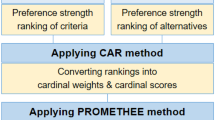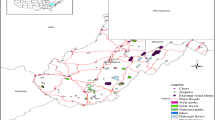Abstract
Nowadays sustainable development is a major focus of national and international economic, social, and environmental agendas, so that a good quality of life can be enjoyed by current and future generations. The problem of climate change has caused great concerns at all levels, from the general public to national governments and international agencies. Renewable energies can be an important remedy to many environmental problems that the world faces today. In this context, some new governmental policies have been adopted to encourage the introduction of renewable energies. But the energy planning scenario has completely changed over the past two decades from and almost exclusively concern with cost minimization of supply-side options to the need of explicitly multiple and conflicting objectives. Different and numerous groups of actors, such as institutions and administration authorities, potential investors, environmental groups, get involved in the process of fossil fuel energy substitution by renewable energies. This complex environment indicates the multi-criteria character of the problem. In this chapter multi-attribute decision-making method combining cloud and utility theory is proposed in order to evaluate different locations for a wind farm in the north of Spain. Whereas utility theory allows us to use different utility curves describing different attitudes toward risk, cloud theory provides a model that facilitates transformation of uncertainty contained in both quantitative and qualitative concepts to a uniform presentation in a numerical domain. Six locations are candidate to place the wind farm according to their topography, infrastructure, land use, safety, and number of days with wind speed >=70 km/h. The results show that the location with the highest number of days with wind speed >=70 km/h and the best land use attribute is the best place to locate the wind farm for both a risk aversion decision-maker and a risk-seeking decision-maker.
Access this chapter
Tax calculation will be finalised at checkout
Purchases are for personal use only
Similar content being viewed by others
References
AEMET (2012) Agencia española de meteorología. http://www.aemet.es
Aras H, Erdogmus S, Koc E (2004) Multi-criteria selection for a wind observation station location using analytic hierarchy process. Renew Energ 23:1383–1392
Dyer JS, Fishburn PC, Steuer RE, Wallenius J, Zionts S (1992) Multiple criteria decision making, multiattribute utility theory: the next ten years. Manage Sci 38(5):645–654
Fisburn PC (1970) Utility theory for decision making. Wiley, New York
Jiménez A, Rios-Insuna S, Mateos A (2003) A decision support system for multiattribute utility evaluation based on imprecise assignments. Decis Support Syst 36:65–79
Keeney R, Raiffa H (1976) Decision with multiple objectives: preferences and value tradeoffs. Wiley, New York
Li D, Du Y (2005) Artificial intelligence with uncertainty. Chapman & Hall, London
Li D, Meng H (1995) Membership clouds and membership cloud generators. J Res Dev 32(6):15–20
Li D, Cheung D, Shi X, Ng V (1998) Uncertainty reasoning based on cloud models in controllers. Comput Math Appl 35(3):99–123
Liao L, Guo WW (2012) Incorporating utility and cloud theories for owner evaluation in tendering. Expert Syst Appl 39:5894–5899
Saaty TL (2000) Fundamentals of decision making and priority theory with AHP. RWS Publications, Pitsburg
San Cristóbal JR (2011) Multi-criteria decision making in the selection of a renewable energy project in Spain: the Vikor method. Renew Energ 36(2):498–502
Author information
Authors and Affiliations
Corresponding author
Editor information
Editors and Affiliations
Rights and permissions
Copyright information
© 2013 Springer-Verlag London
About this chapter
Cite this chapter
San Cristóbal, J.R. (2013). A Multi-Attribute Model for Wind Farm Location Combining Cloud and Utility Theories. In: Cavallaro, F. (eds) Assessment and Simulation Tools for Sustainable Energy Systems. Green Energy and Technology, vol 129. Springer, London. https://doi.org/10.1007/978-1-4471-5143-2_5
Download citation
DOI: https://doi.org/10.1007/978-1-4471-5143-2_5
Published:
Publisher Name: Springer, London
Print ISBN: 978-1-4471-5142-5
Online ISBN: 978-1-4471-5143-2
eBook Packages: EnergyEnergy (R0)




